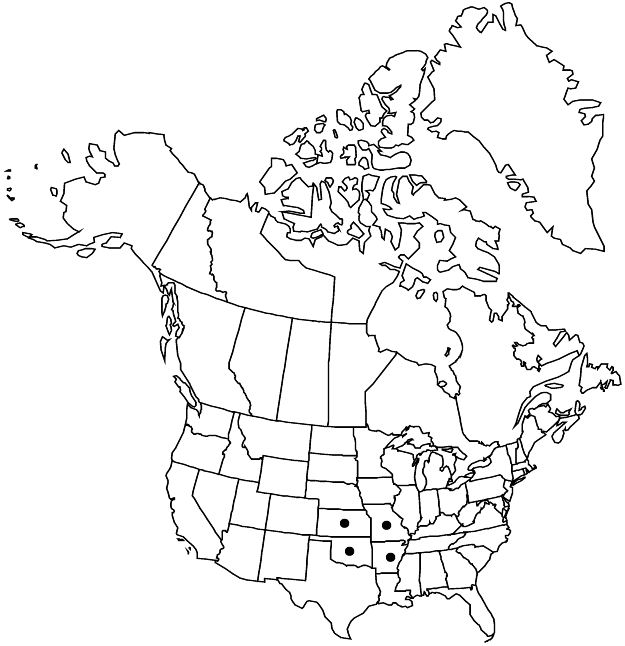Callirhoë digitata
J. Acad. Nat. Sci. Philadelphia 2: 181. 1821/1822.
Plants perennial. Stems 1–4, erect, 5–20 dm, appearing glabrous, but often sparingly hairy, hairs simple, glaucous. Leaves: stipules caducous, subulate, 6–8 mm; petiole 12–30 cm; blade suborbiculate, cordate, or ovate, (3–)5–10-lobed, 3.5–15 × 6–20 cm, surfaces strigose, lobes linear to lanceolate. Inflorescences paniculate; involucellar bractlets absent. Flowers bisexual; calyx lobes valvate in bud, forming apiculate or acuminate point; petals reddish purple with white basal spot, 1.8–3.1 cm. Schizocarps 8–8.5 mm diam.; mericarps 10–20, 3.5–4.5 × 2–3 mm, glabrous, indehiscent; beaks not prominent, 0.5–1.7 mm; collars absent or very weakly developed. 2n = 28.
Phenology: Flowering spring–late summer.
Habitat: Limestone and dolomitic glades, bald knobs, barrens, rocky prairies, open, cherty woodlands
Elevation: 200–500 m
Distribution

Ark., Kans., Mo., Okla.
Discussion
Callirhoë digitata occurs in the Ozark Plateaus, Ouachita Mountains, and adjacent Cherokee Plains. A collection made north of the Missouri River along a railroad right-of-way is clearly adventive.
Selected References
None.
Lower Taxa
"1821/1822" contains a sequence that could not be interpreted against an available match matrix for date components.